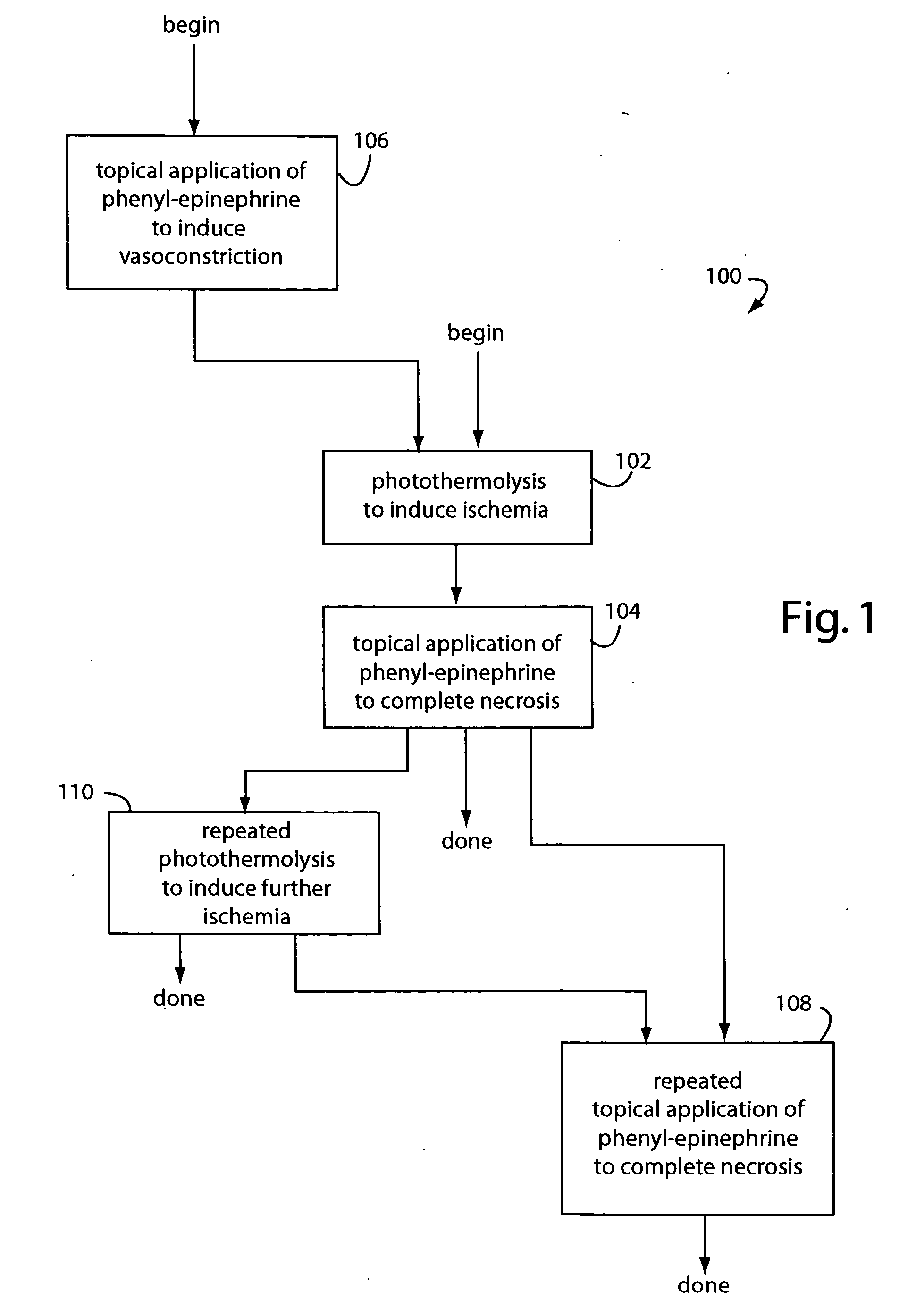Topical phenyl-epinephrine Rosacea treatment
a phenyl-epinephrine and rosacea technology, applied in the field of medical treatment of rosacea and related skin disorders, can solve the problems of rosacea skin becoming inflamed and erupted, affecting the healing effect of rosacea, so as to reduce the number of photothermolysis sessions, reduce the number of treatments, and reduce the effect of pain
- Summary
- Abstract
- Description
- Claims
- Application Information
AI Technical Summary
Benefits of technology
Problems solved by technology
Method used
Image
Examples
Embodiment Construction
[0025]FIG. 1 represents a reddened skin treatment embodiment of the present invention, and is referred to herein by the general reference numeral 100. Such treatment 100 begins with a selective photothermolysis of cutaneous chromophores, in a step 102. The cutaneous chromophores in facial skin include hemoglobin, oxyhemoglobin, and melanin.
[0026] The relative absorptions of light energy by these respective cutaneous chromophores are represented in FIG. 2. (Information source: Lebedev Physics Institute, published at http: / / yachroma.com / slcEng.htm) Using selective photothermolysis to remove abnormal blood vessel requires the light wavelengths used to coincide with the yellow absorption pick of hemoglobin and oxyhemoglobin, e.g., 576 nm. The light spot must be sized for the diameter of the abnormal vessels, about 0.5 mm. The light pulse duration must be less than thermal relaxation time of vessels. And, the light power must be just sufficient enough for adequate photothermolysis, but ...
PUM
| Property | Measurement | Unit |
|---|---|---|
| temperature | aaaaa | aaaaa |
| wavelength range | aaaaa | aaaaa |
| light wavelengths | aaaaa | aaaaa |
Abstract
Description
Claims
Application Information
 Login to View More
Login to View More - R&D
- Intellectual Property
- Life Sciences
- Materials
- Tech Scout
- Unparalleled Data Quality
- Higher Quality Content
- 60% Fewer Hallucinations
Browse by: Latest US Patents, China's latest patents, Technical Efficacy Thesaurus, Application Domain, Technology Topic, Popular Technical Reports.
© 2025 PatSnap. All rights reserved.Legal|Privacy policy|Modern Slavery Act Transparency Statement|Sitemap|About US| Contact US: help@patsnap.com


